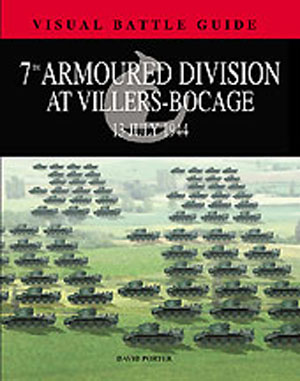
PRODUCT SEARCH
Free Shipping on orders of 8 or more books.
Applies to US Shipments only.
|
Shopping cart is empty.
|
7TH ARMOURED DIVISION AT VILLERS BOCAGE 13 JUNE 1944
Book Type: C by David Porter In the days following the Allied D-Day landings in Normandy on 6 June 1944, the German forces rapidly established strong defenses in front of the city of Caen. On 9 June a two-pronged British attempt to surround and capture the city was defeated, but on the British forces' right flank, neighboring U.S. units had forced open a gap in the German front line. Seizing the opportunity to bypass Caen's defenses, a mixed mobile force of tanks, infantry and artillery, formed around the 7th Armored Division's 22nd Armored Brigade, advanced through the gap in a flanking maneuver towards Villers-Bocage. Under the command of Brigadier William "Loony" Hinde, the 22nd Armored Brigade group reached Villers-Bocage without serious incident, but as its lead elements moved beyond the town on the morning of 13 June they were ambushed by Tiger I tanks of the 101st SS Heavy Panzer Battalion. In less than 15 minutes numerous tanks and transport vehicles fell victim to the German force, the vast majority being destroyed by SS-Obersturmführer Michael Wittmann's tank. The Germans then launched an assault on the town. Although this was repelled, after six hours Brigadier Hinde decided to withdraw his force to a more defensible position outside Villers-Bocage. The British successfully defended their position until a controversial decision was taken to pull the Brigade group back from its salient. 7th Armored Division at Villers-Bocage has an eight-page gatefold depicting the brigade in battle deployment, with reconnaissance units, advance companies, the main body, the brigade command section, plus all the supporting engineers, signalers, artillery etc to provide a visual guide to exactly how many tanks and other armored vehicles were advancing on 13th June. Maps will be used where appropriate to show the location of each element on the battlefield. The description of each part includes action reports, organization, equipment, unit commanders and much more. Thanks to this novel and accessible approach, the book will appeal to both the enthusiast and the general reader interested in World War II. 192 pages, 150 color artworks & b/w photos, 
|


